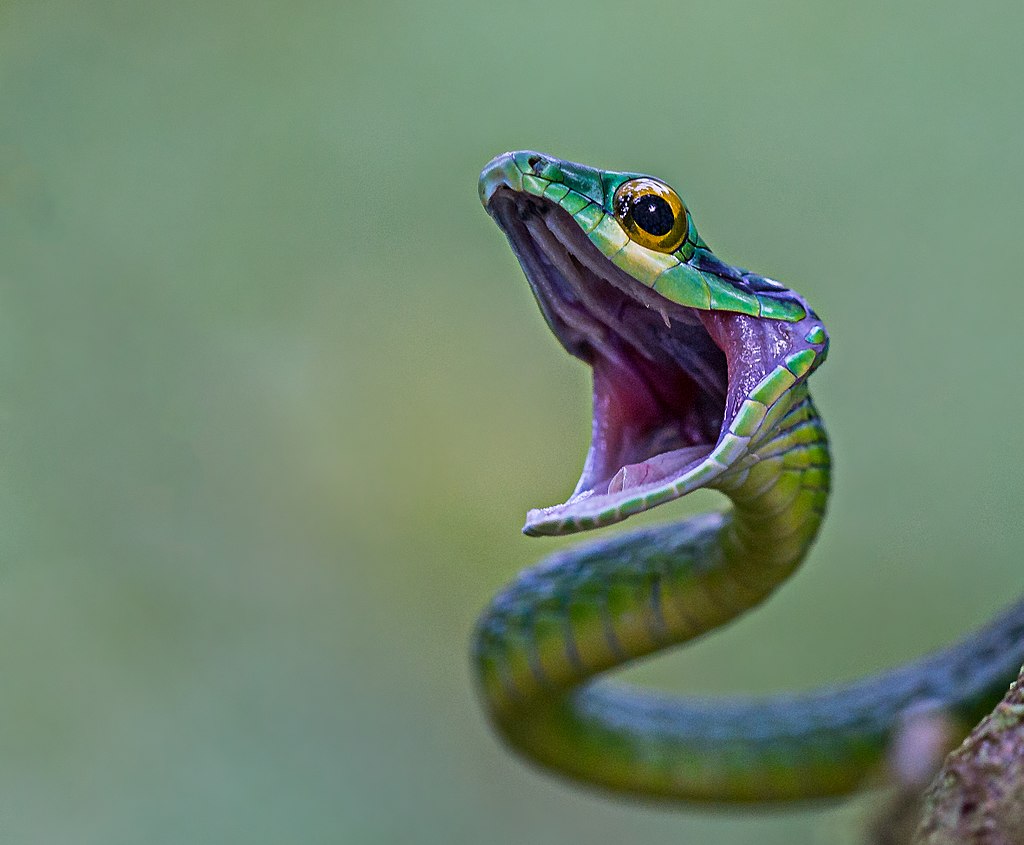Slithering silently through underbrush or across desert sands, snakes navigate their world primarily through chemical signals. While humans rely heavily on vision, snakes experience their environment through an intricate olfactory system that detects and interprets chemical cues in ways we can barely comprehend. Among the most fascinating aspects of snake chemical communication is how these reptiles respond to the scents of conspecifics—members of their own species. This chemical recognition system influences nearly every aspect of snake social behavior, from mating and aggregation to territorial disputes and predator avoidance. Understanding how snakes perceive and react to the scents of their own kind provides a window into their complex social lives and evolutionary adaptations, revealing that these seemingly solitary creatures engage in sophisticated communication networks invisible to the human eye.
The Snake’s Remarkable Olfactory System

Snakes possess one of the most specialized scent detection systems in the animal kingdom, primarily centered around their vomeronasal organ, also known as Jacobson’s organ. Unlike mammals that primarily smell through their nostrils, snakes gather chemical information by flicking their forked tongues, which collect particles from the air and ground before transferring them to this specialized organ in the roof of their mouth. The bifurcated design of the snake’s tongue allows for directional chemosensing, enabling the reptile to determine which direction a scent is strongest—like having stereoscopic smell. This sophisticated system can detect incredibly minute chemical traces left by other snakes, including pheromones, skin lipids, and other bodily secretions. The sensitivity of this system is so remarkable that some snakes can follow chemical trails left by conspecifics days after they’ve passed through an area.
Chemical Recognition of Conspecifics
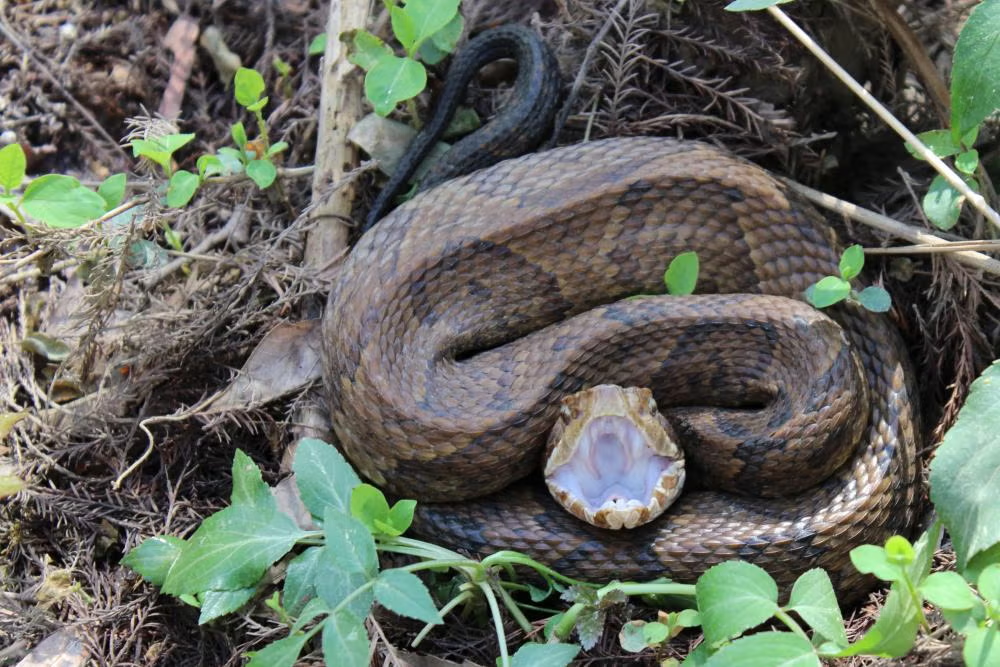
When a snake encounters the scent of another member of its species, it immediately gains a wealth of information about that individual. Research has shown that snakes can determine the sex, reproductive status, size, and even the individual identity of another snake purely through chemical cues. This recognition occurs through complex chemical signatures unique to each snake, similar to how humans have unique fingerprints. Certain compounds in skin lipids and pheromones vary between individuals but maintain species-specific patterns that allow for instant recognition of a conspecific versus other species. This chemical identification system works even when snakes have never encountered each other before, demonstrating that recognition of their own kind is largely innate rather than learned. The ability to chemically “recognize” other members of their species plays a crucial role in nearly all snake social interactions.
Mating Behavior and Chemical Attraction

Perhaps the most dramatic reaction to conspecific scent occurs during breeding season, when male snakes demonstrate remarkable determination in tracking female pheromone trails. During reproductive periods, female snakes release specific sex pheromones that trigger immediate and intense responses in males, who may travel considerable distances following these chemical signals. When male garter snakes detect a receptive female’s scent, their tongue-flicking rate increases dramatically, and they begin following the chemical trail with singular focus. In many species, multiple males may follow the same female’s scent trail, leading to mating aggregations where males compete for access to the female. The chemical cues are so powerful that in some cases, such as with red-sided garter snakes, males have been observed attempting to mate with objects or even other males that have been artificially scented with female pheromones, demonstrating the overwhelming influence these chemical signals have on snake behavior.
Den Sharing and Communal Hibernation
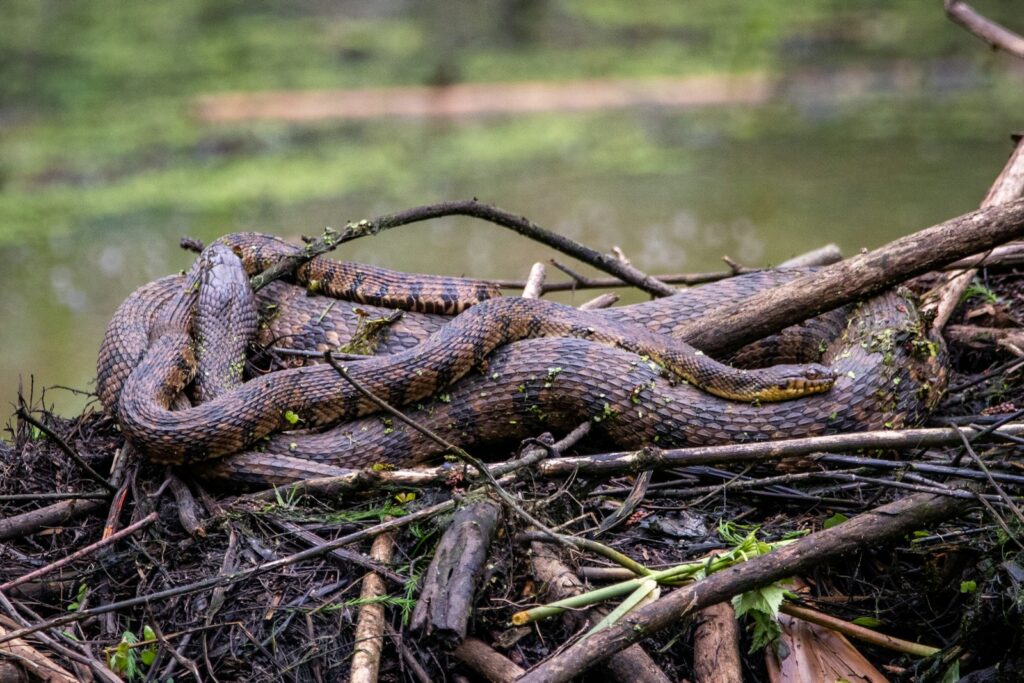
Many snake species in temperate regions share hibernation dens, gathering in large numbers to survive winter months, and chemical recognition plays a critical role in this behavior. Snakes often return to the same den year after year, following scent trails left by conspecifics that have already located suitable hibernacula. In species like timber rattlesnakes and garter snakes, individuals can recognize the specific scent of their den community, distinguishing between snakes from their own hibernaculum versus those from other locations. This chemical familiarity may help reduce stress and aggressive interactions when snakes are densely packed in hibernation spaces. Young snakes born near established dens learn to recognize these communal scents and follow them back to safe hibernation sites, demonstrating how chemical cues from conspecifics serve as crucial navigational tools for survival. Some studies suggest that snakes may even prefer to hibernate with genetically related individuals, detecting subtle kinship cues through their vomeronasal system.
Territorial Responses to Conspecific Scent

Not all reactions to the scent of conspecifics are social or cooperative—many snake species demonstrate territorial behaviors when they detect certain other individuals in their home range. Male snakes of territorial species, such as some vipers and ratsnakes, may respond aggressively to the scent of unfamiliar male conspecifics, particularly during breeding seasons when competition for mates is high. When a territorial snake detects an intruder’s scent, it often increases its tongue-flicking rate and follows the chemical trail until a confrontation occurs. These chemical-triggered territorial disputes typically involve ritualized combat rather than dangerous biting, with males engaging in “wrestling matches” where they intertwine their bodies and attempt to pin each other’s heads to the ground. Interestingly, many snake species show less aggressive responses to the scents of familiar neighbors compared to completely unfamiliar individuals—a phenomenon known as the “dear enemy effect” that suggests snakes can remember and recognize the chemical signatures of specific individuals over time.
Maternal Recognition and Kin Selection

In species with maternal care or family group recognition, snakes demonstrate remarkable abilities to recognize the scent of their offspring or relatives. Female pit vipers, such as timber rattlesnakes, can distinguish between their own neonates and unrelated young through chemical cues, and may protect their offspring for several days after birth. Similarly, young snakes of certain species can recognize siblings and mother through scent alone, even if they’ve never encountered them previously. This chemical recognition appears to be genetic in nature, with snakes able to detect degrees of relatedness through subtle differences in chemical signatures. In experiments with captive snakes, juveniles often prefer to aggregate with siblings rather than unrelated conspecifics when given the choice. This kin recognition ability may have evolved as a mechanism to reduce competition among related individuals and potentially decrease the chances of inbreeding in species where siblings might encounter each other as potential mates.
Predator Avoidance Through Chemical Warnings

When snakes are attacked or stressed, many species release cloacal secretions or musk that serve as alarm cues to other conspecifics in the area. These chemical warning signals can persist in the environment, creating “danger zones” that other snakes of the same species will actively avoid. Experiments have shown that snakes will alter their movement patterns and display defensive behaviors when they encounter substrate marked with these stress chemicals from conspecifics, even if they cannot see any predator themselves. This chemical warning system functions as a type of passive communication network among snakes, allowing individuals to benefit from the dangerous experiences of others without having to face the threat directly. Some species demonstrate particularly strong avoidance responses to the scent of injured conspecifics, suggesting they can distinguish between general stress chemicals and signals indicating serious harm or death. This ability to detect and respond to the distress signals of their own kind provides snakes with a valuable survival advantage in predator-rich environments.
Communal Feeding and Food Competition
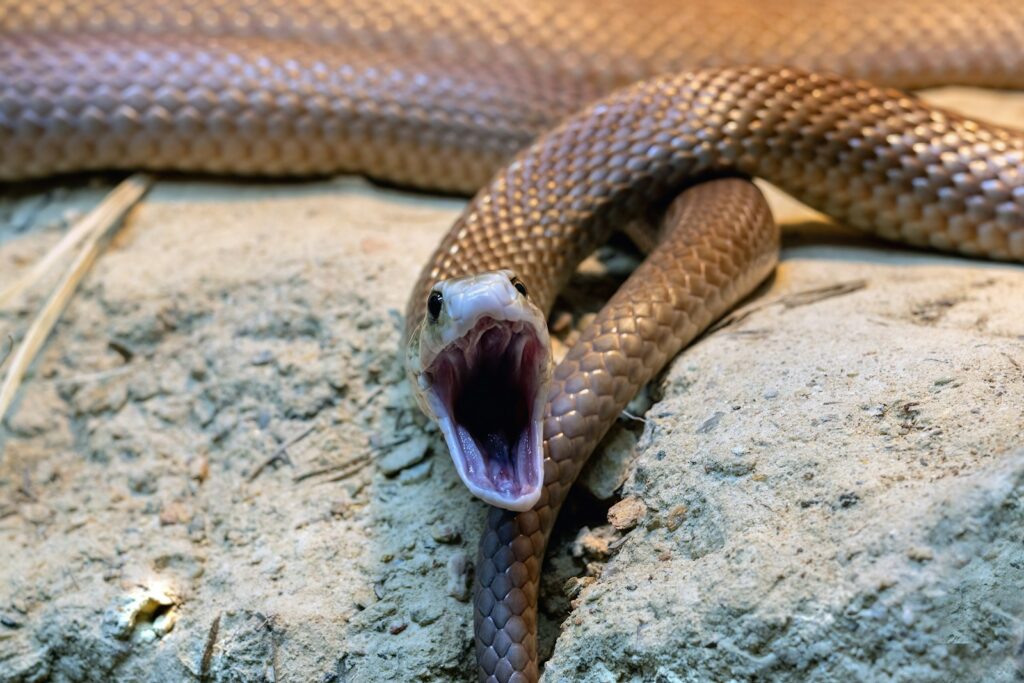
Snake reactions to conspecific scents can dramatically change in the context of feeding, with some species showing attraction rather than avoidance when they detect that other snakes have found food. In certain situations, snakes may follow the scent trails of successfully feeding conspecifics, potentially increasing their own chances of locating prey in resource-limited environments. However, this chemical attraction can quickly turn to competition when multiple snakes converge on limited food resources. Some snake species have been observed altering their feeding behavior when they detect the presence of conspecifics nearby, consuming prey more quickly or selecting different hunting territories to avoid competitive interactions. Interestingly, in captivity, certain communal feeding species like garter snakes may actually eat more when they can detect the chemical cues of other feeding snakes, suggesting a form of social facilitation triggered by conspecific scents.
Seasonal Variations in Chemical Responses
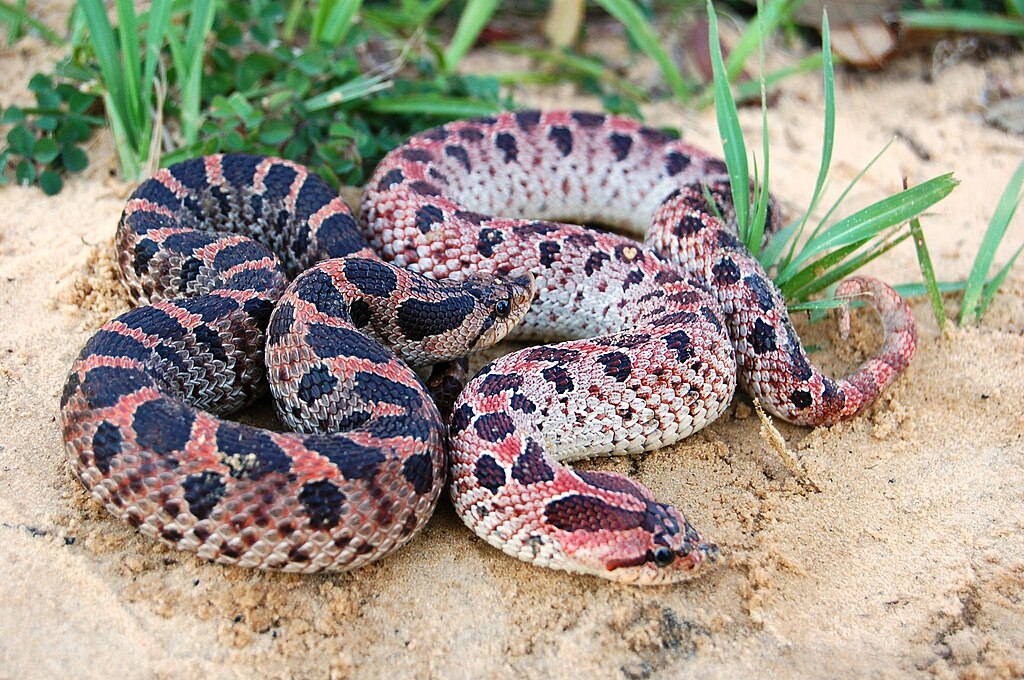
The way snakes react to the scent of their own kind changes dramatically throughout the year, with hormonal cycles playing a significant role in modulating these responses. During breeding seasons, both males and females show heightened sensitivity to certain conspecific chemical cues, with males particularly responsive to female pheromones. In contrast, during post-reproductive periods or when resources are scarce, many species may show greater avoidance of conspecific scents to reduce competition. Pregnant females of some species demonstrate unique shifts in chemical preferences, sometimes seeking out or avoiding specific conspecific scents depending on their reproductive state. These seasonal variations in chemical response are controlled by complex hormonal systems that prepare snakes for appropriate social behaviors at different times of year. The vomeronasal organ itself may undergo physiological changes throughout the year, with increased blood flow and sensitivity during periods when detecting conspecifics is particularly important for reproduction or survival.
Scent-Trailing and Navigation
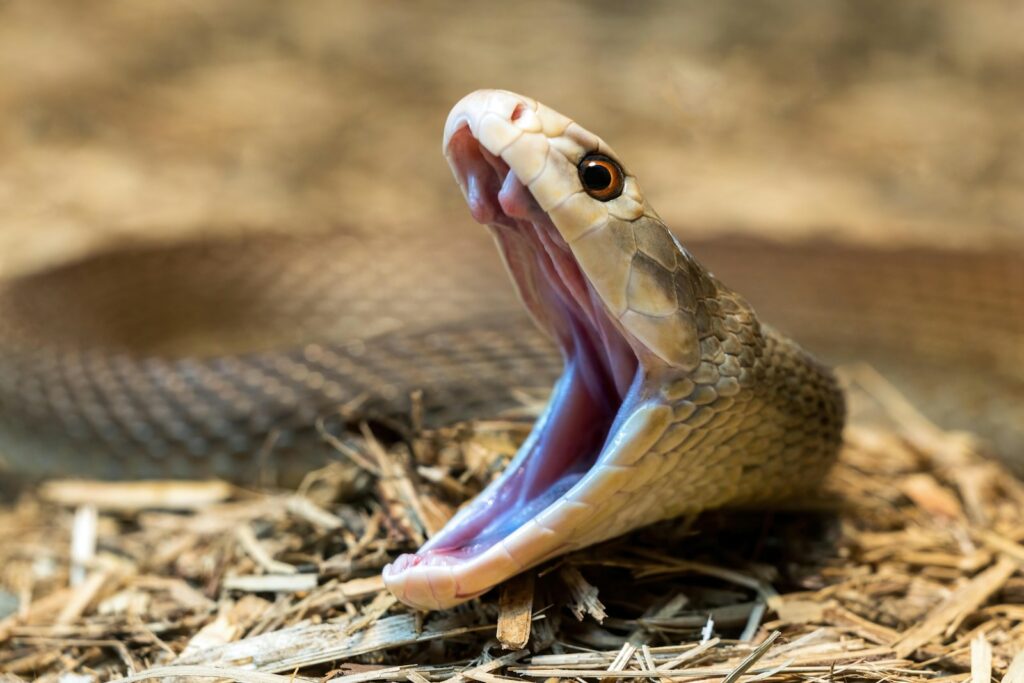
Many snake species use the chemical trails of conspecifics as navigational aids, following these scent paths to locate important resources or return to home territories. Young snakes emerging from eggs or birth may follow the chemical trails left by adults to find appropriate habitat, shelter, or food sources. In species that migrate between summer feeding grounds and winter hibernacula, conspecific scent trails create chemical “highways” that guide individuals along established routes. This chemical trail-following behavior is particularly evident in species like timber rattlesnakes, which maintain consistent migration corridors year after year. Experiments have demonstrated that when researchers remove or obscure these chemical trails, snakes may become disoriented or take longer to reach their destinations. This reliance on conspecific chemical cues for navigation demonstrates how snake populations create a kind of communal knowledge network encoded in scent molecules rather than in visible markings.
Individual Recognition and Social Memory

Beyond simply recognizing their own species, many snakes can distinguish between individual conspecifics based on unique chemical signatures. This individual recognition ability allows for complex social dynamics previously unrecognized in these reptiles. Some snake species appear capable of remembering the scent profiles of individuals they’ve encountered before, responding differently to familiar versus unfamiliar conspecifics. This chemical-based social memory can persist for extended periods, with some studies suggesting snakes may recognize specific individuals even after separations of several months. Female garter snakes, for instance, show different responses to males they have previously mated with compared to novel males, suggesting they maintain a chemical “memory” of past social interactions. This individual recognition system likely plays important roles in reducing aggressive interactions between familiar individuals and potentially contributes to the formation of loose social structures in species previously considered entirely solitary.
Human Applications and Research Challenges
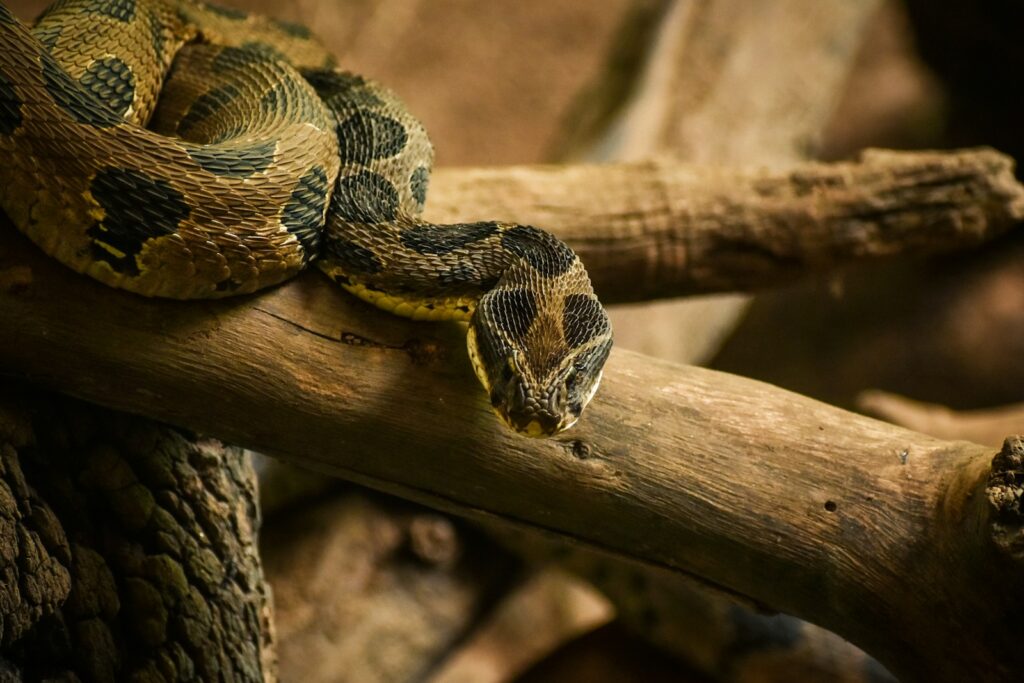
Understanding how snakes react to conspecific scents has practical applications in wildlife management, conservation, and even pest control. Researchers have experimented with using synthetic snake pheromones to manipulate snake behavior, potentially creating chemical barriers or attractants that could help manage invasive species like Burmese pythons in Florida. Conservation efforts for endangered snake species sometimes involve scent-based enrichment in captive breeding programs, where exposure to conspecific scents can stimulate natural behaviors and potentially increase breeding success. However, studying snake chemical communication presents significant challenges, as the compounds involved are often complex and present in extremely low concentrations. Many snake pheromones remain unidentified at the molecular level, with researchers still working to isolate and characterize these important signaling chemicals. Additionally, laboratory studies of chemical responses may not always reflect natural behaviors, as the context in which snakes encounter conspecific scents significantly influences their reactions.
Evolution of Chemical Communication in Snakes
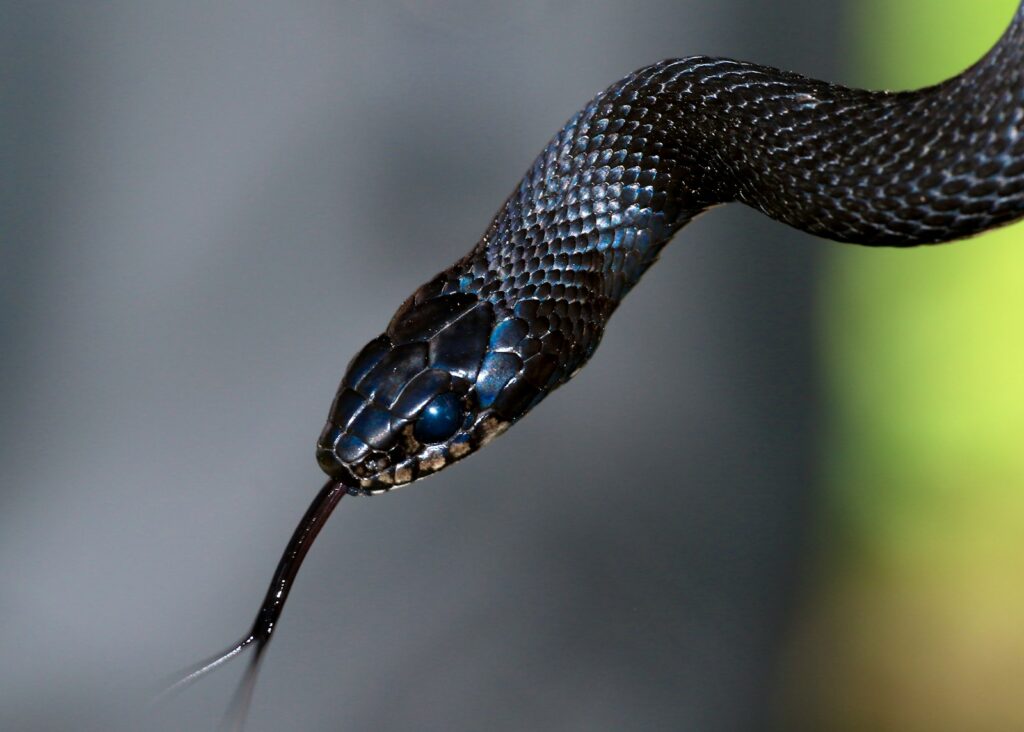
The sophisticated chemical communication system snakes use to recognize and respond to conspecifics represents millions of years of evolutionary refinement. Comparative studies across snake families suggest that the basic mechanisms of conspecific chemical recognition are ancient, likely present in the earliest snake ancestors. However, different lineages have evolved specialized adaptations to their chemical communication systems based on their ecological niches and social structures. Species that regularly aggregate, like garter snakes, tend to have more complex conspecific recognition systems than highly solitary species. The evolutionary pressure to avoid predators while also finding mates and resources has shaped snake chemical communication into remarkably efficient systems. Interestingly, some aspects of snake chemical communication show convergent evolution with mammalian pheromone systems, despite the vast evolutionary distance between these groups. This suggests that certain chemical communication strategies represent optimal solutions that evolution has discovered independently multiple times throughout animal history.
The complex ways snakes react to the scent of their own kind reveals a hidden social dimension to these reptiles often incorrectly assumed to be completely solitary and asocial. Through their remarkable vomeronasal system, snakes participate in chemical conversations that guide nearly every aspect of their lives—from finding mates and avoiding predators to locating shelter and recognizing kin. This sophisticated chemical communication network operates largely invisible to human observers, occurring in a sensory realm we can barely perceive. As research techniques improve, scientists continue to uncover increasingly complex dimensions of snake chemical communication, challenging our understanding of reptile social behavior. Far from being simple creatures driven solely by instinct, snakes navigate a rich olfactory landscape filled with chemical information from conspecifics that influences their decisions and behaviors in profound ways. This hidden dimension of snake sociality reminds us that even animals seemingly most different from ourselves engage in complex communication and social recognition systems—they simply do so through sensory channels unfamiliar to our own experience.

